The Fibonacci Series

Fibonacci numbers have piqued the interest of many people across the world. The Fibonacci series is a sequence of numbers that generate some of the patterns found in nature. Have you wondered why the Fibonacci Series is observed so much in nature? Or why Fibonacci spiral geometry is so pleasing to the eye? Read on and discover more about Fibonacci and the mathematics and history of the Fibonacci series.
Fibonacci’s Rabbits
Fibonacci was a mathematician born in Italy in 1170. He was also known as Leonardo Pisano from Pisa in Italy. Ancient Sanskrit texts from centuries before Fibonacci first mention the series. In 1202, in his book “Liber Abaci”, Fibonacci uses rabbits to illustrate the series in his imagination. He wondered how many pairs of rabbits are born from a single pair of rabbits each year.
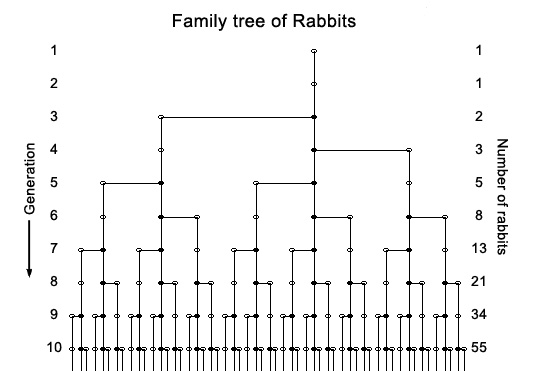
In his thought experiment, the female rabbits always gave birth to pairs of rabbits and each pair consists of one male and one female. Then two newborn rabbits were placed in a fenced-in yard to breed like rabbits. These rabbits must be at least a month old before they are able to reproduce. At the end of the first month, only the original pair of rabbits remain. At the end of the second month, the female rabbit gives birth, leaving two pairs of rabbits. During month three, the original pair of rabbits give birth to another pair of baby rabbits. Their earlier offspring have then grown to adulthood. This leaves three pairs of rabbits, two of which will give birth to two more pairs of rabbits in the fourth month. In total there will be 144 rabbits by the end of the first year.
The number of pairs of rabbits observed each month is 1, 1, 2, 3, 5, 8, 13, 21, 34, 55, 89, 144 and on to infinity. There are also zero rabbits before the experiment starts. Each number is the sum of the previous two, for example, 21+34=55. This series of numbers is known as the Fibonacci numbers or the Fibonacci series.
What is the Fibonacci sequence?
The Fibonacci series is also known as nature’s secret code and nature’s universal rule. It has been used to calculate the physics dimensions of many things including the Great Pyramid at Giza and the seashell. In the Fibonacci sequence, each number is the sum of the two numbers that precede it. The sequence is 0, 1, 1, 2, 3, 5, 8, 13, 21, 34, etc. The equation for the Fibonacci sequence is X(n) = X(n-1) + X(n-2) for n=0 to infinity.
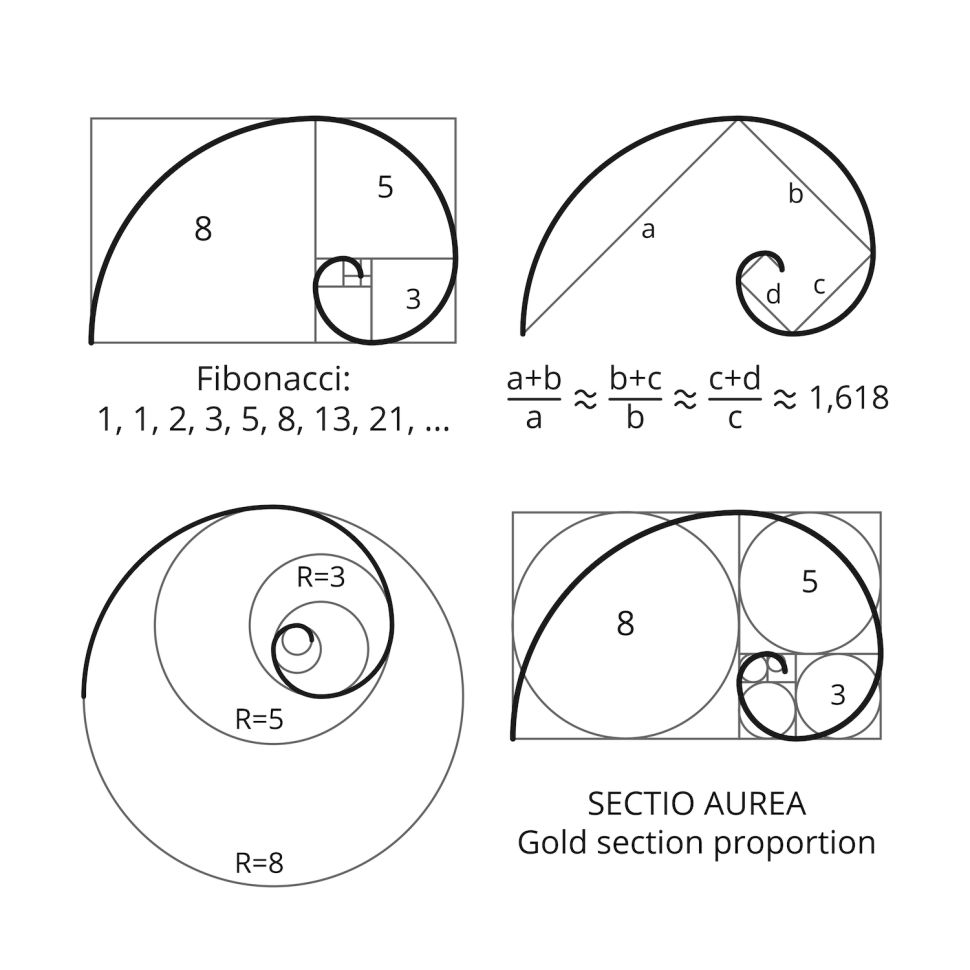
The Fibonacci sequence is intimately linked to the golden ratio. This is a ratio of roughly 1:1.6618034 and occurs frequently throughout the natural world. The golden spiral, or a logarithmic spiral, has a growth factor that equals the golden ratio. The spiral arrangement of leaves or petals on some plants, such as sunflowers and pinecones, follow the golden ratio.
Nature’s Golden Ratios
The ratio of the numbers in the sequence approaches the golden ratio as the sequence approaches infinity. The golden spiral is a logarithmic spiral whose growth factor equals the golden ratio. The golden ratio is expressed in a pattern of spirals that are shaped like shells. The areas of spiral growth are mapped out in squares. If the two smallest squares have a width and height of 1, then the box to their left has measurements of 2. The other boxes measure 3, 5, 8, and 13.
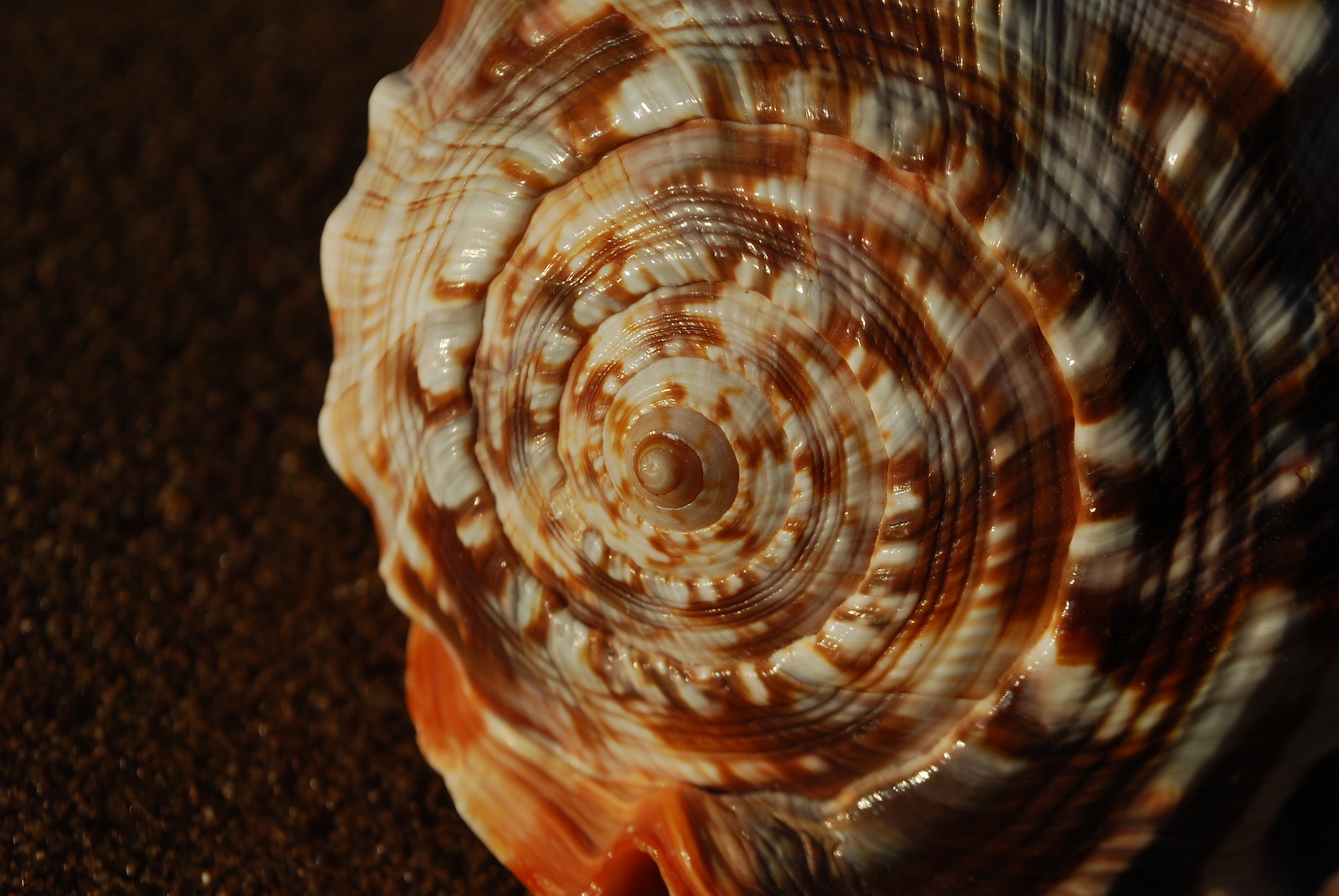
Fibonacci numbers create the structure of some naturally occurring patterns in nature. This is seen by studying the manner in which various plants grow. The golden ratio captures some types of plant growth. For example, the spiral arrangement of leaves or petals on some plants follows the golden ratio. The ratio exists because that particular growth pattern evolved as the most effective for maximum sun exposure and seed arrangement.
Seeds & Flowers
The seeds that lie at the centre of a sunflower all have spiral patterns that curve from left and right. If you count the spirals the total number will be a Fibonacci number. You will get two consecutive Fibonacci numbers when you divide the spirals. For example, there may be 13 seeds in the left-pointing spiral and 21 seeds in the right-pointing spiral. Similar spiral patterns are also present in pinecones, raspberries, pineapples, and cauliflower.
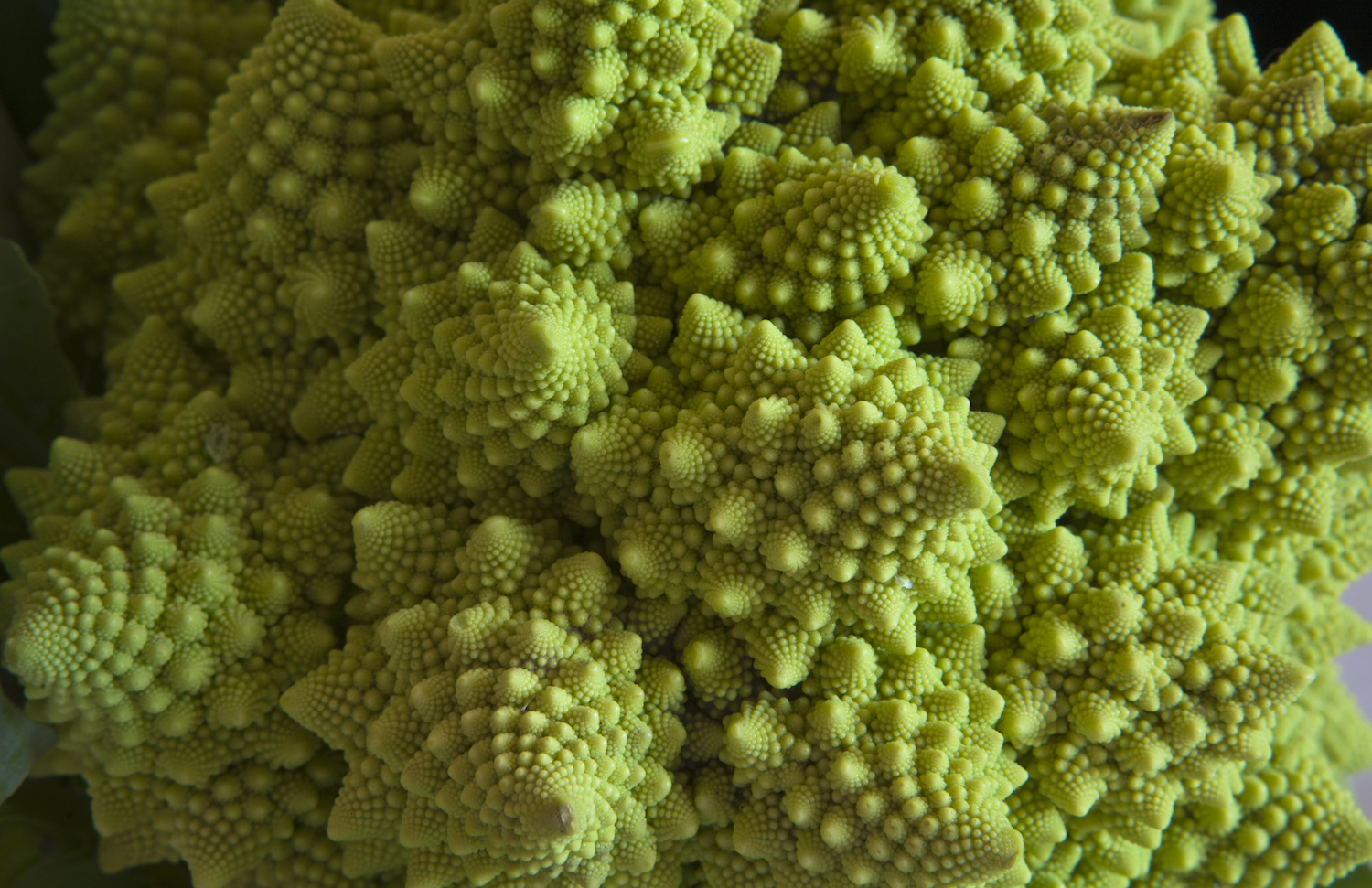
The total of the number of petals on a flower is often found to be one of the Fibonacci numbers. Irises and lilies have three petals, buttercups and wild roses have five petals, and delphiniums have eight petals.
Trees Branching
When trees grow they will branch in a specific pattern. One trunk will grow until it branches off from two points creating two branches from that branch point. The main trunk then continues to grow and branches again to create three new branches. Then the trunk and the first branch will grow another two branches. This brings the total of new branches to five.
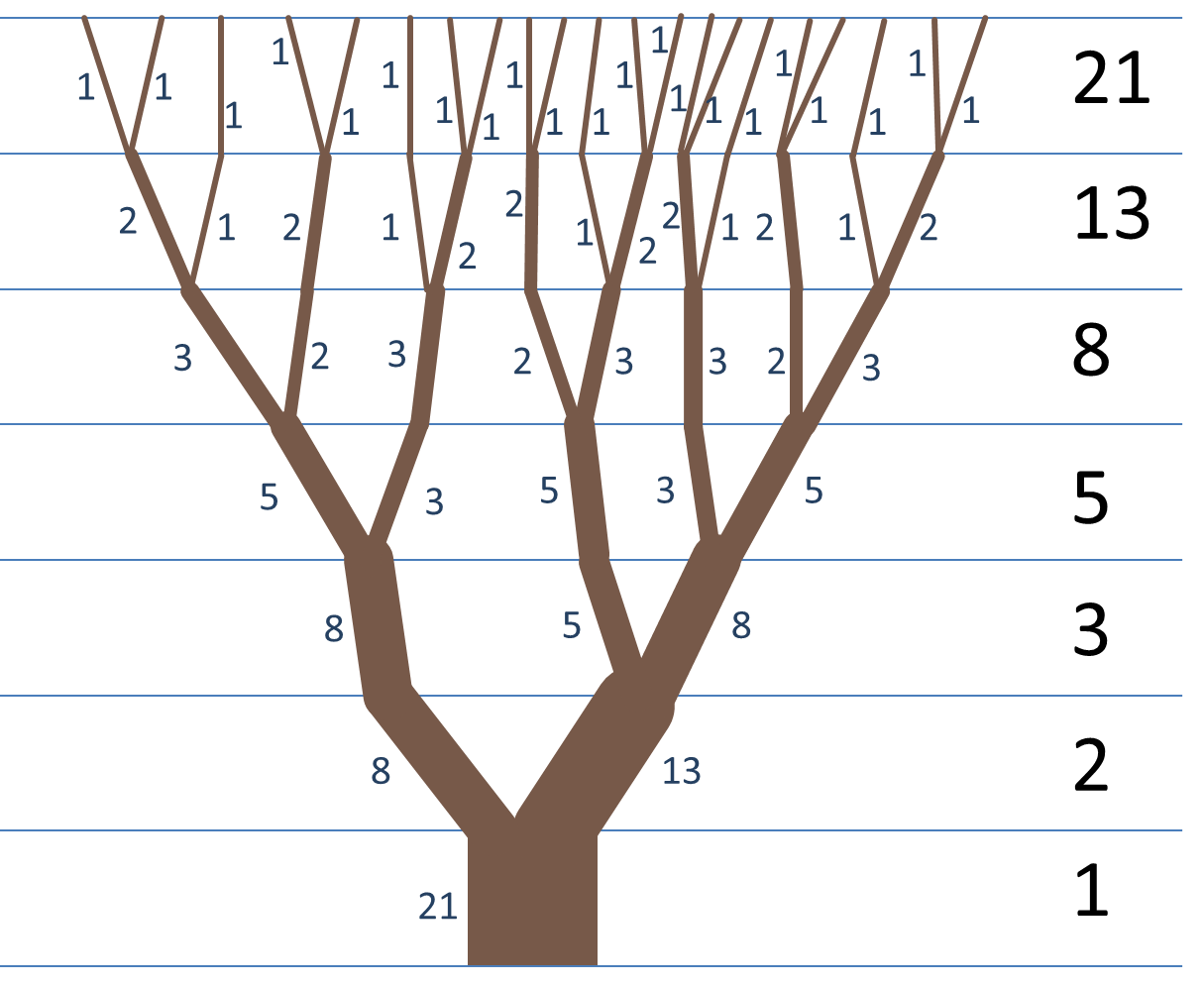
The pattern of branching observed in trees will continue to follow the Fibonacci numbers. The next set of branching will create 8, then 13, then 21 new branches in total.
The human body
The golden ratio is a guide for the number and proportion of body parts. Have a look at your reflection in the mirror. You will observe that you have one nose, two eyes, three limb segments, and five toes on each foot.
DNA molecules also follow the Fibonacci sequence. For each full cycle of the double helix, your DNA molecules are 34 angstroms long and 21 angstroms wide. This is in the ratio of 21:34 and these are in the Fibonacci series.
Explore your divinity and deepen your understanding of life with Infinity. As an Infinity member, you get all of the tools to transform your life physically, emotionally, and spiritually. You also have access to the meditation library and meditation challenges, high vibrational recipes, unique exercise workouts, and mind-blowing cosmic activations.
Go here to join infinity.
Healing For Horses Enquiry Form
"*" indicates required fields
Sign up for our weekly newsletter, for inspiration and fresh content from Jerry Sargeant.
Event Enquiry Form
"*" indicates required fields
Sign up for our weekly newsletter, for inspiration and fresh content from Jerry Sargeant.
[mc4wp_form id=”168″]
Download Prospectus Form
[contact-form-7 id=”50219″ title=”Download Propesctus Form”]
Download Prospectus Form
[contact-form-7 id=”50219″ title=”Download Propesctus Form”]
Star Magic
Accessibility Statement
- sminfozzle.testingweblink.com
- December 15, 2025
Compliance status
We firmly believe that the internet should be available and accessible to anyone, and are committed to providing a website that is accessible to the widest possible audience, regardless of circumstance and ability.
To fulfill this, we aim to adhere as strictly as possible to the World Wide Web Consortium’s (W3C) Web Content Accessibility Guidelines 2.1 (WCAG 2.1) at the AA level. These guidelines explain how to make web content accessible to people with a wide array of disabilities. Complying with those guidelines helps us ensure that the website is accessible to all people: blind people, people with motor impairments, visual impairment, cognitive disabilities, and more.
This website utilizes various technologies that are meant to make it as accessible as possible at all times. We utilize an accessibility interface that allows persons with specific disabilities to adjust the website’s UI (user interface) and design it to their personal needs.
Additionally, the website utilizes an AI-based application that runs in the background and optimizes its accessibility level constantly. This application remediates the website’s HTML, adapts Its functionality and behavior for screen-readers used by the blind users, and for keyboard functions used by individuals with motor impairments.
If you’ve found a malfunction or have ideas for improvement, we’ll be happy to hear from you. You can reach out to the website’s operators by using the following email
Screen-reader and keyboard navigation
Our website implements the ARIA attributes (Accessible Rich Internet Applications) technique, alongside various different behavioral changes, to ensure blind users visiting with screen-readers are able to read, comprehend, and enjoy the website’s functions. As soon as a user with a screen-reader enters your site, they immediately receive a prompt to enter the Screen-Reader Profile so they can browse and operate your site effectively. Here’s how our website covers some of the most important screen-reader requirements, alongside console screenshots of code examples:
-
Screen-reader optimization: we run a background process that learns the website’s components from top to bottom, to ensure ongoing compliance even when updating the website. In this process, we provide screen-readers with meaningful data using the ARIA set of attributes. For example, we provide accurate form labels; descriptions for actionable icons (social media icons, search icons, cart icons, etc.); validation guidance for form inputs; element roles such as buttons, menus, modal dialogues (popups), and others. Additionally, the background process scans all the website’s images and provides an accurate and meaningful image-object-recognition-based description as an ALT (alternate text) tag for images that are not described. It will also extract texts that are embedded within the image, using an OCR (optical character recognition) technology. To turn on screen-reader adjustments at any time, users need only to press the Alt+1 keyboard combination. Screen-reader users also get automatic announcements to turn the Screen-reader mode on as soon as they enter the website.
These adjustments are compatible with all popular screen readers, including JAWS and NVDA.
-
Keyboard navigation optimization: The background process also adjusts the website’s HTML, and adds various behaviors using JavaScript code to make the website operable by the keyboard. This includes the ability to navigate the website using the Tab and Shift+Tab keys, operate dropdowns with the arrow keys, close them with Esc, trigger buttons and links using the Enter key, navigate between radio and checkbox elements using the arrow keys, and fill them in with the Spacebar or Enter key.Additionally, keyboard users will find quick-navigation and content-skip menus, available at any time by clicking Alt+1, or as the first elements of the site while navigating with the keyboard. The background process also handles triggered popups by moving the keyboard focus towards them as soon as they appear, and not allow the focus drift outside it.
Users can also use shortcuts such as “M” (menus), “H” (headings), “F” (forms), “B” (buttons), and “G” (graphics) to jump to specific elements.
Disability profiles supported in our website
- Epilepsy Safe Mode: this profile enables people with epilepsy to use the website safely by eliminating the risk of seizures that result from flashing or blinking animations and risky color combinations.
- Visually Impaired Mode: this mode adjusts the website for the convenience of users with visual impairments such as Degrading Eyesight, Tunnel Vision, Cataract, Glaucoma, and others.
- Cognitive Disability Mode: this mode provides different assistive options to help users with cognitive impairments such as Dyslexia, Autism, CVA, and others, to focus on the essential elements of the website more easily.
- ADHD Friendly Mode: this mode helps users with ADHD and Neurodevelopmental disorders to read, browse, and focus on the main website elements more easily while significantly reducing distractions.
- Blindness Mode: this mode configures the website to be compatible with screen-readers such as JAWS, NVDA, VoiceOver, and TalkBack. A screen-reader is software for blind users that is installed on a computer and smartphone, and websites must be compatible with it.
- Keyboard Navigation Profile (Motor-Impaired): this profile enables motor-impaired persons to operate the website using the keyboard Tab, Shift+Tab, and the Enter keys. Users can also use shortcuts such as “M” (menus), “H” (headings), “F” (forms), “B” (buttons), and “G” (graphics) to jump to specific elements.
Additional UI, design, and readability adjustments
- Font adjustments – users, can increase and decrease its size, change its family (type), adjust the spacing, alignment, line height, and more.
- Color adjustments – users can select various color contrast profiles such as light, dark, inverted, and monochrome. Additionally, users can swap color schemes of titles, texts, and backgrounds, with over seven different coloring options.
- Animations – person with epilepsy can stop all running animations with the click of a button. Animations controlled by the interface include videos, GIFs, and CSS flashing transitions.
- Content highlighting – users can choose to emphasize important elements such as links and titles. They can also choose to highlight focused or hovered elements only.
- Audio muting – users with hearing devices may experience headaches or other issues due to automatic audio playing. This option lets users mute the entire website instantly.
- Cognitive disorders – we utilize a search engine that is linked to Wikipedia and Wiktionary, allowing people with cognitive disorders to decipher meanings of phrases, initials, slang, and others.
- Additional functions – we provide users the option to change cursor color and size, use a printing mode, enable a virtual keyboard, and many other functions.
Browser and assistive technology compatibility
We aim to support the widest array of browsers and assistive technologies as possible, so our users can choose the best fitting tools for them, with as few limitations as possible. Therefore, we have worked very hard to be able to support all major systems that comprise over 95% of the user market share including Google Chrome, Mozilla Firefox, Apple Safari, Opera and Microsoft Edge, JAWS and NVDA (screen readers).
Notes, comments, and feedback
Despite our very best efforts to allow anybody to adjust the website to their needs. There may still be pages or sections that are not fully accessible, are in the process of becoming accessible, or are lacking an adequate technological solution to make them accessible. Still, we are continually improving our accessibility, adding, updating and improving its options and features, and developing and adopting new technologies. All this is meant to reach the optimal level of accessibility, following technological advancements. For any assistance, please reach out to


